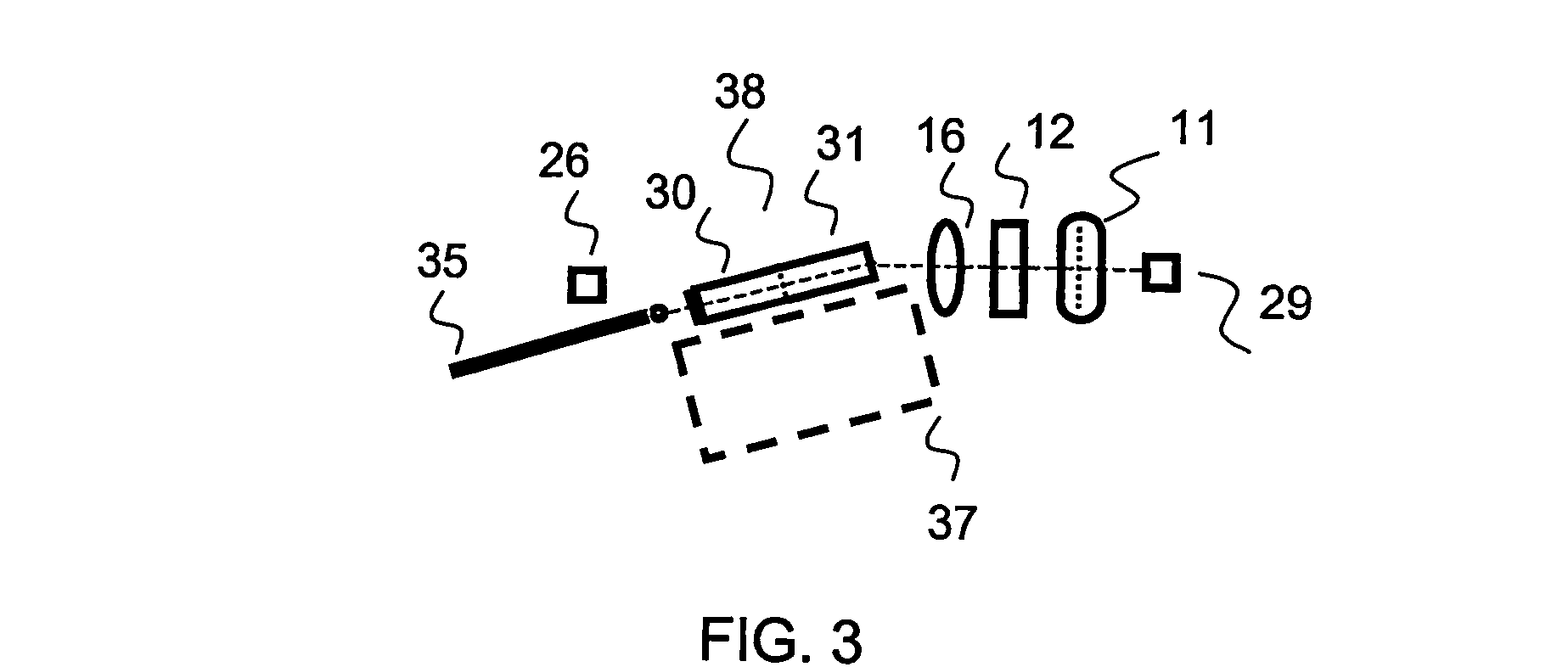External Cavity Tunable Laser and Control
a tunable laser and external cavity technology, applied in the direction of laser output parameters control, semiconductor laser optical devices, lasers, etc., can solve the problems of low tunability, 4-16 channels, and advanced dfb lasers suffer, so as to avoid lasing instability and negligible effect on tunable laser performan
- Summary
- Abstract
- Description
- Claims
- Application Information
AI Technical Summary
Benefits of technology
Problems solved by technology
Method used
Image
Examples
Embodiment Construction
[0067] Reference is now made to FIG. 1, which illustrates schematically an External Cavity (EC) tunable laser 10, constructed and operative according to a first preferred embodiment of the present invention utilizing a tunable filter 11, such as a GWS filter, and an intra-cavity etalon 12. The laser cavity is defined by the region 18 between one end mirror 36 and the GWS element 11, with the gain medium 14 situated therein. The gain medium can be any of the common lasing media, whether solid state, gaseous or liquid. According to a most preferred embodiment, the lasing element 14 is a laser diode chip, and the end mirror 36 is then described as the front facet of the laser diode chip, and this embodiment will be generally used throughout this application to illustrate the various preferred embodiments of the present invention, though it is to be understood that the invention is not meant to be limited to such laser diodes. According to one preferred implementation of the embodiment ...
PUM
 Login to View More
Login to View More Abstract
Description
Claims
Application Information
 Login to View More
Login to View More - R&D
- Intellectual Property
- Life Sciences
- Materials
- Tech Scout
- Unparalleled Data Quality
- Higher Quality Content
- 60% Fewer Hallucinations
Browse by: Latest US Patents, China's latest patents, Technical Efficacy Thesaurus, Application Domain, Technology Topic, Popular Technical Reports.
© 2025 PatSnap. All rights reserved.Legal|Privacy policy|Modern Slavery Act Transparency Statement|Sitemap|About US| Contact US: help@patsnap.com



